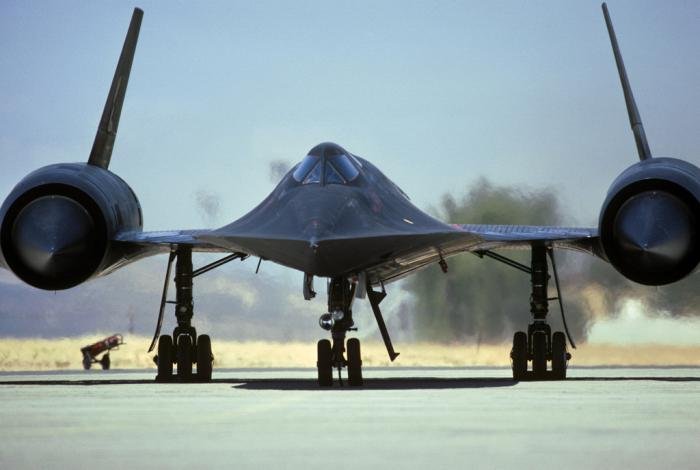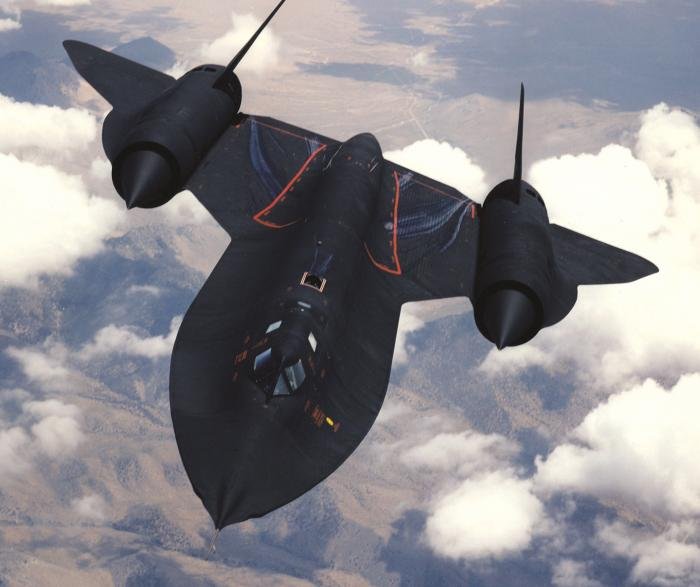Key.Aero’s Dino Carrara interviewed pilot Ed Yeilding to hear about his time assigned to the SR-71 Blackbird. In this segment of the interview he provides fascinating insights about the flying characteristics of the Mach 3+ jet
Q. What was the SR-71 like to fly?
A. “It was a real joy to fly. I loved flying the aeroplane which had its best fuel economy at Mach 3.2. Most of our missions were a little slower than that at Mach 3. You didn’t feel the speed so much when flying at Mach 3 because we were so high at well above 70,000ft and usually approaching 80,000ft, so above any clouds, any jetstream. The flight was always really smooth, no turbulence, and you just noticed that you got to your destinations and turn points in a hurry. We had a distance display to the next turn point and you would see the miles ticking by faster – it took less than two seconds per mile.
Also remarkable at that altitude was the darkness overhead, the slight curvature of the Earth, and the bright band of blue on the horizon because we were flying above 97% of air molecules.
Flying characteristics at that speed were that the aeroplane rolled easily, almost as easily as a fighter. However, in pitch it was heavy. The stick was heavy at pitch to help us from exceeding the g-limit of the aeroplane when we were at Mach 3 and near 80,000ft. Our g-limit was 1.5g which meant we were not allowed to exceed 45° of bank at altitude and when supersonic.

You would think that in pitch the aeroplane would be very sensitive at high speed, but the air was so thin that the flying characteristics were good.
The Blackbird near 80,000ft had the feel of an aeroplane near sea level flying at about 350kts. We had an airspeed readout called KEAS, which stood for Knots Equivalent Airspeed. Normally our KEAS were from 310kts up to typically 450kts, so it flew as if you were flying at sea level at that speed even though we were flying 2,000 miles an hour.
One of the most unique characteristics of the aeroplane is something you had to be ready for – it was a phenomenon called the unstart. As we're flying supersonic at Mach 3 the shockwave inside of the inlet occasionally would get displaced and when that happened it felt like a sudden explosion. You'd be flying along and all of a sudden, boom!, you would get a sudden yaw on the aeroplane because you'd lose about 80% of the thrust on that engine. Sometimes it was sudden enough that it would bang your helmet against the canopy.
They were not dangerous as long as you could keep the Blackbird from pitching up as it was possible to lose control of the aeroplane. If it pitched out of control it would break apart.
In the early days there would be maybe several unstarts per flight. When I started flying it in 1983 I was getting about one unstart every other flight on average.
When you had an unstart you'd get the sudden yaw, but the computers would send both spikes fully forward and open the bypass doors and the air was so thin that you did not lose airspeed very quickly. Then the computers would reset the spikes and doors and you continued the flight.
The computer control of the spikes and the bypass doors were refined over time and by the time the SR-71 was retired in 1990, the system was working so well that we were getting about one unstart a year. Consequently, when it was retired the aeroplane was flying better than it had ever done before.
If you had repeated unstarts, the computer was not controlling the spikes and doors properly. We had controls in the cockpit enabling us to set the spike position manually and gauges showed what the spike positions were on each side. We also had gauges that showed the position of the bypass doors that bypass some air around the inlet and engine. The bypass doors would also help position the shockwave in the narrow throat area of the inlet. The inlet system was really interesting and was one of the reasons that the aeroplane performed so well supersonically.

We would practice flying ‘manual inlet’ setting the spike position and bypass doors during training missions over the United States. On reconnaissance missions we didn't fly a ‘manual inlet’ unless we had to, because you could get better imagery if the aeroplane was very stable as when the computers were controlling the spikes and the doors.”

